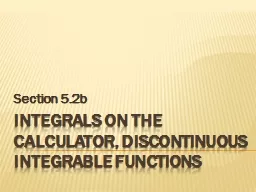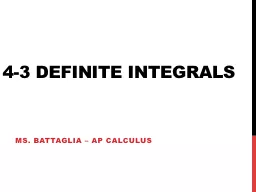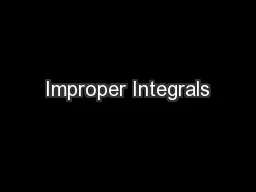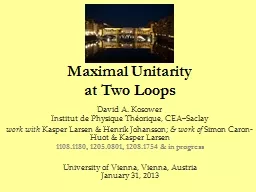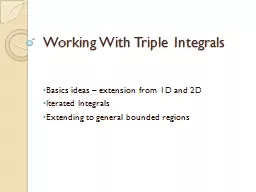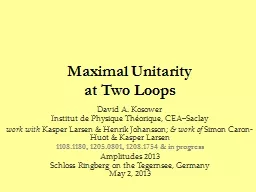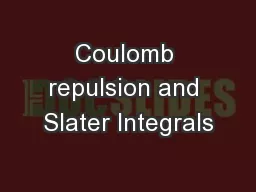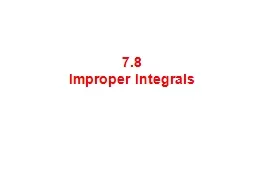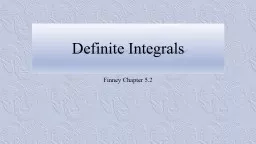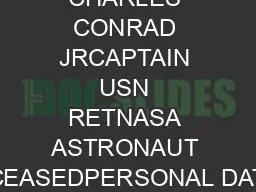PDF-DIFFERENTIATING UNDER THE INTEGRAL SIGN KEITH CONRAD I had learned to do integrals by
Author : briana-ranney | Published Date : 2014-12-13
Bader had given me It showed how to di64256erentiate parameters under the integral sign its a certain operation It turns out thats not taught very much in the universities
Presentation Embed Code
Download Presentation
Download Presentation The PPT/PDF document "DIFFERENTIATING UNDER THE INTEGRAL SIGN ..." is the property of its rightful owner. Permission is granted to download and print the materials on this website for personal, non-commercial use only, and to display it on your personal computer provided you do not modify the materials and that you retain all copyright notices contained in the materials. By downloading content from our website, you accept the terms of this agreement.
DIFFERENTIATING UNDER THE INTEGRAL SIGN KEITH CONRAD I had learned to do integrals by: Transcript
Download Rules Of Document
"DIFFERENTIATING UNDER THE INTEGRAL SIGN KEITH CONRAD I had learned to do integrals by"The content belongs to its owner. You may download and print it for personal use, without modification, and keep all copyright notices. By downloading, you agree to these terms.
Related Documents


